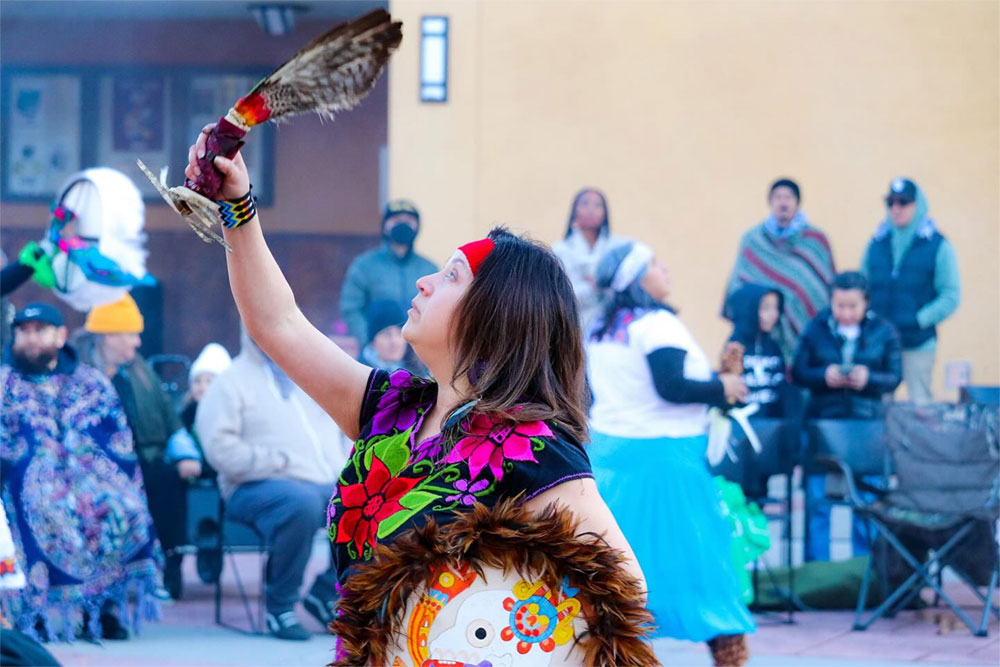Do Native Americans Celebrate New Year?
Do Native Americans Celebrate New Year? December 2023
Another year is beginning to wind down. A year without COVID is a good year, but as always, there were highs and lows for everyone. Still, the start of a new year is a cause for celebration, not just in the U.S., but across the globe. Every culture has its own calendar, traditions and ways of welcoming the start of the year. Although many may not realize it, here in the U.S., we have hundreds of cultures and traditional calendars that present a variety of new year beginnings and traditions. Appreciating them is appreciating the cultural wealth and diversity that is such an integral part of this country. There are far too many celebrations to list here, but a broad outline of a few of them will help give you an idea of how much there is to understand and enjoy.

Hopi New Year
The Hopi celebrate their New Year at the time of the winter solstice – 22nd December. It is a 9-day celebration that is full of prayers, rituals and feasting. The focus is on asking the sun to move forward to another summer where life achieves its full vitality.
Makahiki
In Hawaii, Native Americans celebrate Makahiki, a festival of new beginnings. It has 3 phases and the first is spiritual cleaning and making offerings to the Gods. The second phase is about singing, dancing, competitive sports and, of course, feasting. The final phase is to honor the God Lono who represents rain, fertility and music.
Iroquois
The 9-day Iroquois New Year celebration timing depends on the lunar cycles but typically takes place in January or February. The 9 days are full of rituals, games, dancing, feasting, and more. The celebrations end with a thanksgiving for what the tribe has received and the welcoming of the New Year.
Umatilla
The Umatilla New Year is focused on the tribe’s sacred food, which includes deer and bitter roots. The celebrations occur towards the end of winter and are based on the lengthening of the days as spring approaches. The celebrations focus on the tribal elders sharing their wisdom with the younger members.
Tewa
Tewa is a language spoken by various tribes and while each tribe is different, the common language gives rise to some commonalities, including the celebrations of the New Year. The festivities start at the winter solstice with the turtle dance. This is followed by deer dances to represent the powers of both the masculine and feminine and how they combine to give the strength to prosper in the New Year.
Northern California Indian Tribes
Renown anthropologists Lowell John Bean and his colleague Sylvia Brakke Vane wrote in their 1990 chapter title California Culture Area about World Renewal Religion noting:
The World Renewal rituals in northwest California reenacted in song and dance the creation of the world, and thus restored the world to a renewed primal state in which human had an ordered relationship with each other and with the universe. This world of humans, it was assumed, required regeneration because of “pollution,” i.e., behavior on part of humans over a period of time (see Bean and Vane 1978 in Handbook of North American Indians, Vol. 8, California).
Distant cousins of the Muwekma Ohlone, the Mountain Maidu Tribe of North-Central California practice the Bear Dance, which some Muwekma tribal members participated in in the late 1980s. Noted on-line on the Historical Mark Database for Quincy in Plumas County, California, under Inscription it states:
Long before the white man came to this land the Maidu performed the Bear Dance (Weda) each Spring. This ceremony, which is performed to this day, is a spiritual and social gathering. It honors the creation, the World Maker and the earth while paying homage to the grizzly bear and rattlesnake. Prayers are said at sunrise and everyone is asked to speak their heart.
Also noted is the following:
A traditional spring celebration for the Maidu was the Bear Dance when the Maidu honored the bear coming out of hibernation. The bear's hibernation and survival through the winter symbolized perseverance to the Maidu, who identified with the animal spiritually.
Today the Bear Dance is the largest and most important spiritual gathering of the Mountain Maidu during the year. Although it is, in a sense, a New Year’s celebration, it is done in June, rather than April to accommodate spring planting and the school year, but otherwise it is essentially unchanged from the old days. (https://www.hmdb.org/m.asp?m=163513).
There are hundreds of Native American tribes spread across the U.S. Some have federal or state government recognition while others are still fighting for it. Whatever their status, each tribe has a unique culture, history and traditions that need to be appreciated and protected so that they can continue to add to the cultural history of the United States. Many tribes have not just contributed to the growth of this country, but they have sacrificed a great deal to protect this nation. One such tribe, that may be small but has given so much, is the Muwekma Ohlone. Visit the tribe’s website to learn more about what it is and why another new year should not come and go without it being reissued the status and recognition it deserves and also learn more about community support for Muwekma Ohlone Tribe restoration.